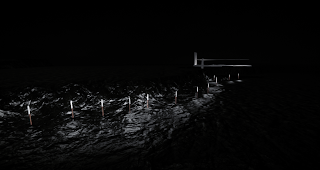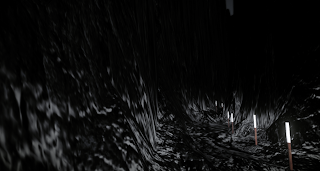I decided to do my final electroliquid aggregation in three ways. First I let fate decide, spreading the words around face-down into an order then turning them the right way up - this allowed me to let go of any assumptions or structure and maybe come across something entirely new or creative. However it just seems to make no sense.
 |
| Randomised electroliquid aggregation |
I then got a friend to come along and rearrange the cards in any way he found interesting. I really liked what he came up with so I decided to base my own idea on that.
 |
| A friends advice |
I decided to settle on a Haiku structure for two reasons. Firstly, it is in keeping with the Japanese theme, provides a poetic structure and appeals to my personal aesthetic interests. Secondly, the English Haiku is derived from the original Japanese via a sort of eletroliquid aggregation - when you consider that the original Haiku (or hokku) was developed in medieval Japan, and the modern Haiku was an adaptation by the imagists (Ezra Pound, Jack Kerouak) who lived in a post-modern/consumerist industrialised West, it is a blurring of the material (the natural focus of original hokku) and the immaterial (the imagist).
The structure of a Haiku is:
- Use of three lines of up to 17 syllables;
- Use of a season word (kigo);
- Use of a cut or kire (sometimes indicated by a punctuation mark) to compare two images implicitly.
I obviously do not have a literal "season" word but as I'm in a post-modern mood, I guess you could take both the meaning of lightness and transience as kigo. Lightness as a representation of the day, and transience as a representation of the relationship between space/time and therefore the seasons. The colon : for the kire was an obvious choice. After playing around for a while I came up with a short statement. I love the rhythm, I love the blurring of meanings and I love the way that after reading it you feel your mind simultaneously empty and full (the very purpose of mu: the concept of nothingness).
 |
| My Haiku electroliquid aggregation |
With this statement in mind I went back and pulled and played around with my ELA models. Oddly enough I settled on a design which was almost identical to the original "nothingness/lightness" ELA I came up with in class. Combining the two I ended up with a two part structure. One I call the
sundial, while the other is the
obelisk. They are joined by the void which cuts them into two.
 |
| Original Sketch |
 |
| The Sundial |
 |
| The Obelisk |



































